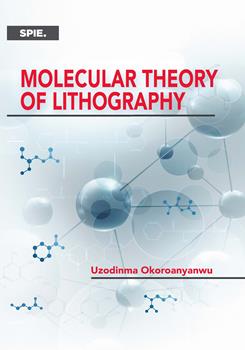|
At the heart of lithography are chemical transformations designed to print a relief image of an object on a flat surface. The printing involves the registration of information in the imaging layer, referred to as the resist, by means of electromagnetic radiation, or molecular self-assembly, or by embossing/imprinting. It comprises both photography and a development process that penetrates deep into the subsurface of the resist and etches away the unwanted regions of the image. The object may be a mask containing patterns of integrated circuit devices; the flat surface may be a silicon wafer coated with photo- or radiation-sensitive resist, which upon exposure and development is transformed into the relief image of the mask. Underlying these transformations are distinct chemical reactions that are mediated by electrons and governed by established chemical laws that are explainable by time-tested chemical and physical theories.
We will examine and show how these electrons mediate the molecular interactions that underlie the lithographic contrast between the exposed and unexposed regions of the resist. We will also examine the lithographic process, including unit operations such as substrate preparation, coating, exposure, pre- and post-exposure baking, development, and postexposure stabilization processes. Finally, we will examine the imaging mechanisms, including photo- and radiochemical, imprint, and molecular self-assembly.
In a way, this book is an attempt to examine lithography through the lens of the molecular science that it truly is, and through the effort present a reasonably complete, unified exposition of the molecular theory that underlies lithographic imaging. The approach therefore calls for critically examining the molecular-level chemical transformations that underlie lithography, and systematically explaining with physical-chemical theories the essential aspects of lithographic phenomena in the many varied forms in which the field is practiced today. We will use as a monitor for these transformations the flow of electrons between essential components in a lithographic system, while respecting the conservation of mass1 and energy laws.
|


